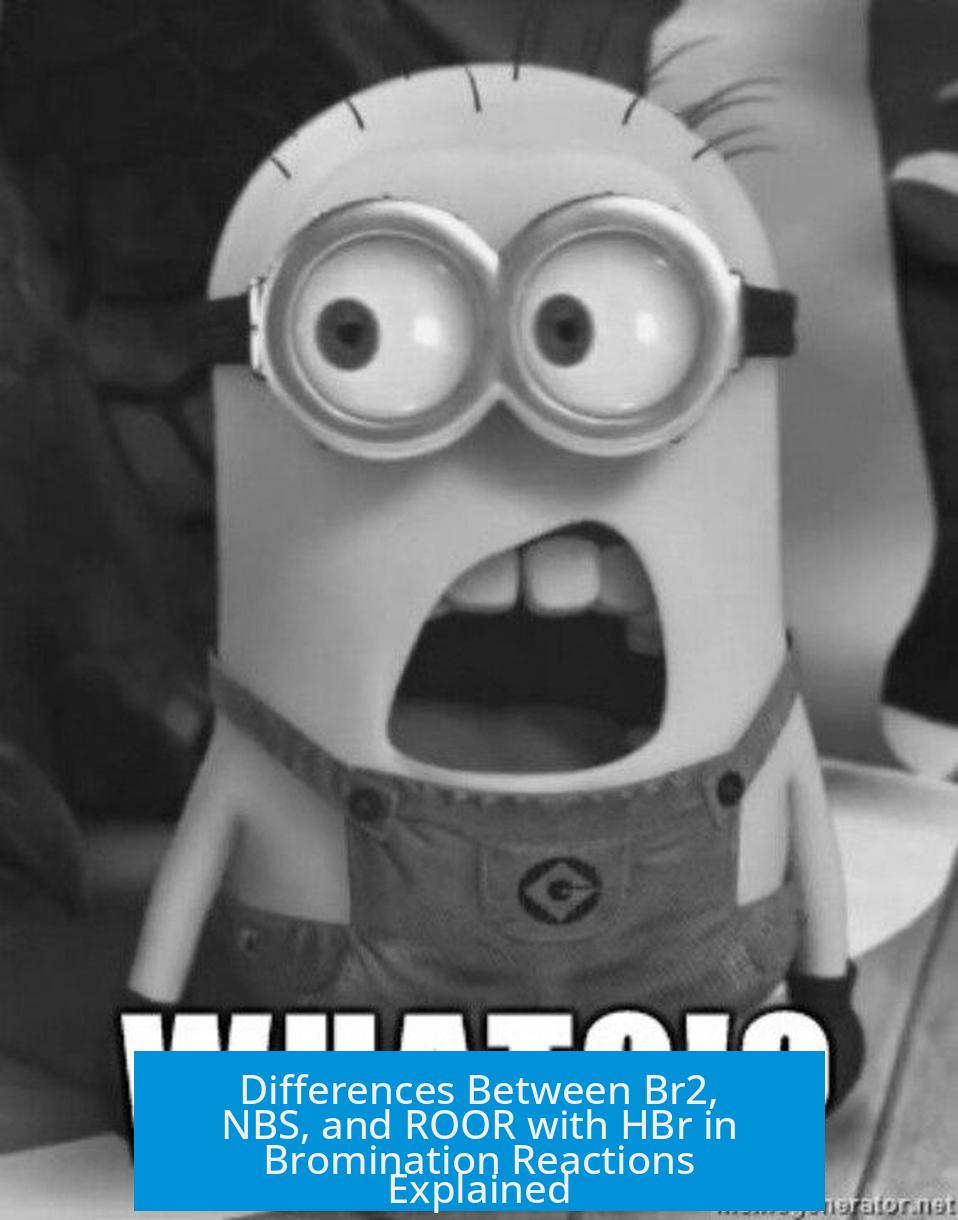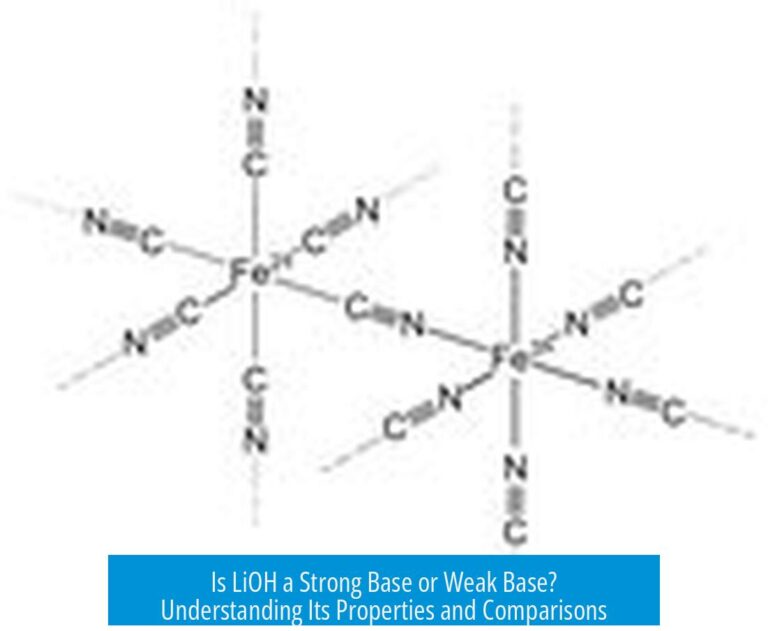Understanding the Differences Between Br2, NBS, and ROOR with HBr in Bromination Reactions
The difference between Br2, NBS, and ROOR with HBr lies in the type of bromination they perform, their mechanistic pathways, and the regiochemistry of the bromine addition. Each reagent has a distinct role in organic synthesis, particularly in bromination reactions, dictated by unique mechanisms and selectivities.
1. Br2 (Bromine) in Bromination
Br2 typically adds bromine atoms across carbon-carbon double bonds via electrophilic addition. Under standard conditions, Br2 follows Markovnikov addition, meaning bromine attaches to the more substituted carbon of the alkene.
The mechanism starts with Br2 acting as an electrophile. The alkene pi bond attacks one bromine atom, forming a bromonium ion intermediate. This intermediate is then attacked by the bromide ion from the opposite side, leading to vicinal dibromide formation.
Effect of Peroxides on Br2 Reactions
In the presence of peroxides (ROOR), the bromination mechanism changes to a radical pathway. This causes anti-Markovnikov addition, where bromine attaches to the less substituted carbon of the double bond.
However, if the Br2 sample contains impurities or is not pure, the reaction may generate a mixture of Markovnikov and anti-Markovnikov products. This occurs because both electrophilic and radical pathways may operate simultaneously.
2. NBS (N-Bromosuccinimide) in Bromination
NBS is a selective reagent used mainly for the bromination of allylic and benzylic positions. These are carbons adjacent to double bonds or aromatic rings.
The bromination by NBS proceeds via a radical mechanism. It abstracts a hydrogen from the allylic or benzylic carbon, generating a resonance-stabilized radical. The radical then reacts with bromine, installing the bromine atom selectively at these positions.
This selectivity allows NBS to modify molecules without disrupting double bonds or aromatic systems, enabling functionalization at specific sites.
3. HBr Alone in Bromination
Hydrogen bromide (HBr) adds bromine atoms to alkenes through a straightforward electrophilic addition mechanism. The addition follows Markovnikov’s rule, attaching bromine to the more substituted carbon atom.
The pi bond acts as a nucleophile, first combining with the proton from HBr to form the most stable carbocation intermediate. Then, the bromide ion attacks this carbocation, yielding the brominated product. This is a common hydrohalogenation reaction.
4. HBr with ROOR (Peroxides) in Bromination
When HBr reacts in the presence of peroxides (ROOR), the addition proceeds through a radical chain mechanism. This shifts the regioselectivity to anti-Markovnikov addition.
The peroxides initiate the reaction by forming bromine radicals. These radicals preferentially add bromine to the less substituted carbon of the double bond. The radical mechanism is distinct and does not produce carbocation intermediates.
Importantly, this radical initiation by ROOR only works effectively with HBr. Other hydrogen halides (e.g. HCl or HI) do not undergo anti-Markovnikov addition in peroxide conditions due to differences in radical stabilities and reaction kinetics.
Summary Table
| Reagent | Type of Addition | Target Position | Mechanism | Notes |
|---|---|---|---|---|
| Br2 | Markovnikov | Across double bond | Electrophilic addition | With peroxides → anti-Markovnikov (radical) |
| NBS | Allylic/Benzylic | Adjacent to double bond or aromatic ring | Radical bromination | Selective for allylic and benzylic carbons |
| HBr | Markovnikov | Across double bond | Electrophilic addition | Standard hydrohalogenation reaction |
| HBr + ROOR | Anti-Markovnikov | Across double bond | Radical addition initiated by ROOR | Active only for HBr; other halogens inactive |
Key Points to Remember
- Br2 adds bromine electrophilically, mainly via Markovnikov addition unless peroxides induce radical anti-Markovnikov addition.
- NBS selectively brominates allylic and benzylic carbons through a radical mechanism.
- HBr alone adds bromine Markovnikov to alkenes via electrophilic addition.
- HBr in the presence of peroxides undergoes radical anti-Markovnikov addition; this is unique to HBr among hydrogen halides.





Leave a Comment